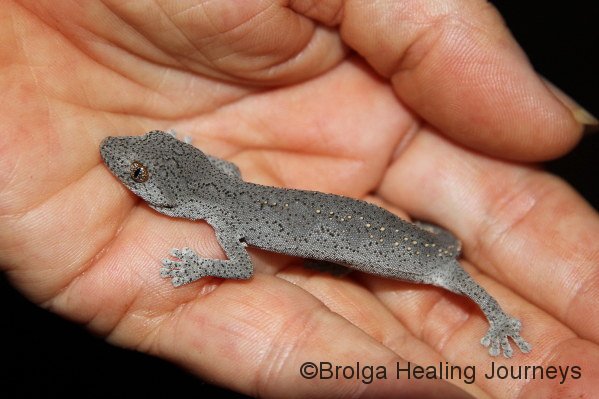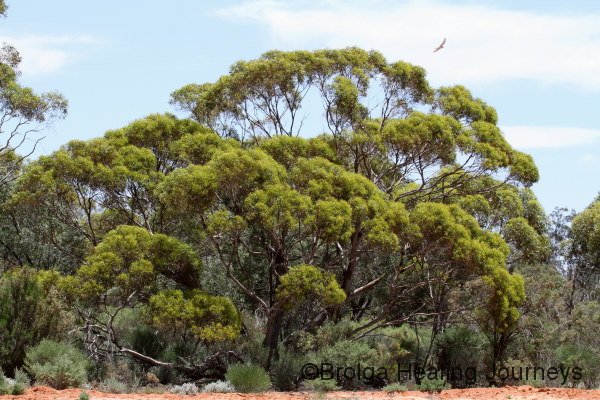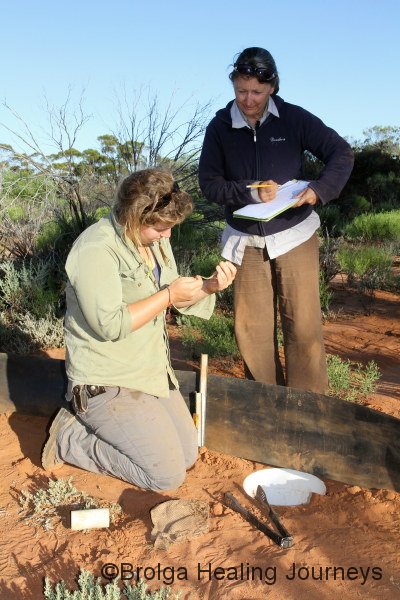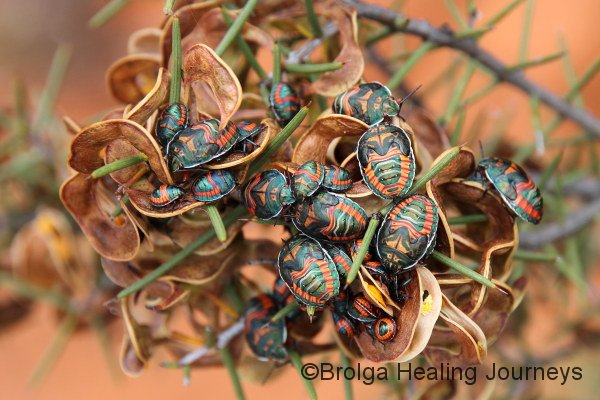Scotia Wildlife Sanctuary – a ray of hope

Scotia Wildlife Sanctuary, in the mallee country of far western New South Wales, offers a step back in time to an era when Australia’s medium-sized marsupials hopped freely across the landscape. Nowadays, these beautiful creatures have all but disappeared in the wild, due to land-clearing and predation by foxes and feral cats.
Scotia is owned by the Australian Wildlife Conservancy (AWC), a privately run, non-profit organisation doing some inspiring, but often unheralded, work around Australia to save our rapidly disappearing wildlife.
The Scotia sanctuary is a large property – some 64000 hectares – of which 8000 hectares (20000 acres) are feral free, protected behind feral-proof electrified fences. Within this 8000 hectares, Bilbies, Woylies (Brush-tailed Bettongs), Boodies (Burrowing Bettongs), Numbats, Bridled Nailtail Wallabies, Malas (Rufous Hare Wallabies) and Greater Stick-nest Rats are able to lead natural lives, doing what they once did across Australia. Before White Settlement, these animals were even widespread across western NSW, but soon disappeared with the advent of grazing and the spread of feral pests. Most have been absent from the region since the 1800s. The AWC works to protect regional wildlife in their sanctuaries and also, as in the case of Scotia, to re-introduce species that once were found in the area.
In fact, many of the species re-introduced at Scotia are now nearly extinct in the wild Australia-wide, and without the marvelous work by the AWC, and a few small government projects, they would be gone within a few years. So the work being done at Scotia is absolutely vital to their survival. 

We were recently privileged to spend 7 weeks at Scotia, doing some volunteer work. We had some amazing experiences there, learning an enormous amount about the creatures they protect and the ecosystems on the sanctuary. Scotia is closed to the public, but volunteer work offers an opportunity for people to visit and support the work being done there.
Scotia has a relatively small full-time staff of ecologists, land management officers and feral control staff, all of whom do an amazing amount of work in the arid and unforgiving environment of Scotia. To give you some idea of the conditions, we had a couple of days above 44 degrees while we were there, and in winter it gets down to minus 5. (This summer has been fairly mild; apparently it usually reaches 50 degrees.) The nearest town – Wentworth – is a 2 ½ hour drive to the south, while Broken Hill is further to the north. We had a couple of heavy ‘rainfall events’ which left us all land-locked for close to a week, with most of the dirt roads impassable. The boggy conditions following the rain gave us plenty of practice driving through mud, always mindful of the local mantra “stick to the centre of the puddle – except for those when you don’t”. It was fun, though at times a bit hair-raising.
But it is not all tough, not by a long shot. The staff at Scotia are wonderful people, welcoming, humourous, professional, dedicated. They made us feel like part of the family. Nirbeeja and I celebrated Christmas at Scotia with Joe Stephens, Scotia’s manager. It was just the three of us, and it was almost surreal to be surrounded by all that amazing wildlife, and have it virtually to ourselves. It was a Christmas we will never forget.
And now to the wildlife…
What a joy it was to wander outside at night and see Bilbies and Bridled Nailtail Wallabies hopping around the buildings, and in the morning to see their tracks in the sand instead of those of rabbits or foxes. At night we also caught glimpses of Woylies and Boodies (marsupial appetites on legs), while during the day we saw the occasional Numbat.
The Numbats, gorgeous little striped termite-eating marsupials, were much smaller than we expected and, for their size, must be one of the fastest runners on the planet. Just ask anyone who has attempted to catch one to attach a radio-collar for research how fast and agile they are! Nirbeeja is proud to have tracked down one of the radio-collared Numbats, affectionately named Jacinta, using a hand held antenna. We were tracking Jacinta to ensure that she was okay, and found her sheltering in a tree hollow. She confirmed her state of health for us when she backed out of the hollow and shot off at high speed into the bush, a tiny blur of orange.
For a couple of weeks we had the job of going out around dusk, every second night, to provide supplementary feed for the Bridled Nailtail Wallabies and the Malas. This was hardly what we would call work, it was more a labour of love. The wallabies would line up along the track, virtually blocking the path of the ute. These pretty little wallabies have the peculiar behaviour of holding their front limbs stiff and at odd angles as they hop along. The Mala, an even smaller wallaby, has held a special place in our hearts since we first encountered it at Alice Spring’s Desert Park, so it was a joy for us to be reacquainted with them in their enclosure at Scotia. The Mala is extinct on the Australian mainland, so we felt extremely privileged to see them at Scotia living wild and free, yet safe from feral predators.
Walking around at Scotia, you need to be a little careful, because many of the marsupials are burrowers and diggers, so the ground is full of holes; you need to watch your footing at all times! But this digging activity has many benefits for the land – such as allowing leaf litter to break down more quickly, thereby adding nutrients to the soil and reducing fuel for fire. The digging also allows rainfall to be retained rather than lost through run-off, and improves seed germination. Indeed, much research is underway at Scotia to determine the benefits of restoring the original wildlife to the local ecology.
Like much of Australia, Scotia received high rainfall during 2010, and the benefits are obvious. The mallee – eucalypts with many trunks coming up from a root base that broadens with age - are simply gorgeous, covered in shiny new, bright green foliage. Scotia is home to the most impressive mallee we have seen, with many trees hundreds of years old. Similarly, the Belah (Casuarina) trees are healthy, large and ancient. The spinifex is tall and covered in seed. Insects and spiders (and their webs) are everywhere you turn.
Of course, with all this food, the birdlife was also prospering. We saw large flocks of Woodswallows and Budgerigars inter-mixed, a combination we had never before seen. Major Mitchell’s Cockatoos were in good numbers,many in flocks of around a dozen or more, the largest we have seen. We also saw our first Malleefowl during our stay at Scotia, a male working on his large mound-like nest, to keep the eggs inside it a constant temperature. The Malleefowl is a large bird, around the size of a chicken, and is struggling to survive in south-eastern Australia, with its young being easy prey for foxes. At least at Scotia they have a safe area in which to breed and prosper.







Scotia is also home to many reptiles. Most frequently seen were the Sand Goannas and Bearded Dragons, though we also saw many geckos, smaller dragons, a Mulga Snake and a Banded Brown Snake.





Our volunteer work gave us an opportunity to experience an interesting range of the work done at Scotia. We patrolled the electrified fences, checking fence integrityto prevent entry by feral predators, and ensuring no animals were stuck or injured. The fence patrol also involved regular stopping to fill in the many holes dug along the fenceline by the bilbies, bettongs and numbats. We also collected acacia (wattle) seed and spread it around old dam sites, and assisted Tony and Joanne with some of their feral animal control in the areas outside the electrified fences.
The most enjoyable work of all, though disruptive to our sleep patterns, was helping ecologist Felicity (Flic) with the night-time spot-lighting and distance sampling, which involved driving around a series of tracks along specified routes, in order to estimate population sizes of Bilbies, Wallabies, Woylies and Boodies. Call us a little strange, but there is nothing so exciting as seeing a Bilby or Woylie hopping through the undergrowth at 1.30am. Of course, a week or so of very late nights can do some weird things to the mind, a phenomenon named the “heeby jeebies” by Nirbeeja. As an example, early one morning Nirbeeja and Katja (a volunteer from Denmark who is now an honorary Aussie) both believed they saw a Bridled Nailtail Wallaby sitting on top of a Boodie. They were aghast. What was going on? Eventually they realised they were actually watching a wallaby joey suckling from its mother.
We left Scotia yesterday, sad to be leaving Joe, Flic, Max, Joanne, Katja, Aline, Jennifer and Tony, but happy in the knowledge that we will be returning soon to help out with further night-time work estimating marsupial populations. We can’t wait.
The work of the AWC at Scotia and their other sanctuaries is profoundly important to the survival of many of our wildlife species. These species can’t speak for themselves to ask for your help, so we’ll ask for them! You can support the AWC by making a donation to their work, or by doing some volunteer work on their sanctuaries. Details are available on their website:
http://www.australianwildlife.org/
Peter
3 February 2011
Note: The photographs we took at Scotia are not for sale for copyright reasons.











More photos follow:
GENERAL
MAMMALS
BIRDS
REPTILES
INVERTEBRATES
FLORA
SUNSETS
































































































































Peter, whats your technique for shooting birds in flight agains the brightly light sky? Your shots are so well exposed – the details of the bird’s plummage are so well defined and the sky is of good color. I seem to only be able to get one of the two right!